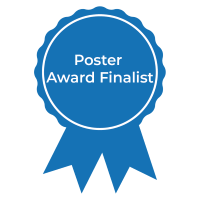Back
Neural Crest, Placodes and Craniofacial Development
Poster: Neural Crest, Placodes and Craniofacial Development
45 - Impact of Mandibular Distraction on Hyoid Position in Patients with Pierre Robin Sequence
Monday, March 25, 2024
10:15am – 12:15pm US EDT
Location: Sheraton Hall
Poster Board Number: 45
There are separate poster presentation times for odd and even posters.
Odd poster #s – first hour
Even poster #s – second hour
Co-authors:
There are separate poster presentation times for odd and even posters.
Odd poster #s – first hour
Even poster #s – second hour
Co-authors:
Peishu Li - University of Chicago; Shelby Nathan - University of Chicago Medical Center; Hannes Prescher - University of Michigan Medicine; Fatima Bouftas - University of Chicago Pritzker School of Medicine; Callum Ross - University of Chicago; Russell Reid - University of Chicago Medical Center

Annie T. Wang
University of Chicago
Chicago, Illinois, United States
Presenting Author(s)
Abstract Body : Introduction: Pierre Robin Sequence (PRS) is a congenital condition marked by micrognathia, glossoptosis and airway obstruction due to posterior displacement of the tongue. PRS patients demonstrate anatomic differences in the hyoid bone, which plays a key role in swallowing and respiration. Treatment for severe PRS cases include surgeries such as mandibular distraction osteogenesis (MDO). MDO advances the mandible anteriorly, increasing oropharyngeal space and may shift the hyoid position. The primary objective is to evaluate 3D hyoid position in pre- and post-MDO PRS patients and compare them to pediatric controls. A secondary objective is to correlate feeding data of these patient cohorts.
Methods: Radiographic CT scans were obtained for PRS patients pre- and post-MDO carried out for management of micrognathia and control patients who received CT scans for other purposes. Using 3D Slicer software, hyoid position was measured relative to craniomandibular landmarks including the menton, basicranium and vertebral column, and compared between pre- and post-MDO PRS patients and controls. Feeding data was collected via retrospective chart review.
Results: Twenty-four patients were included in the study, with 10 PRS patients from one surgeon’s practice (pre- and post-MDO scans) and 14 controls (single CT scan). The average age of pre- and post-MDO PRS patients at the time of imaging was 3.4 months and 9.5 months, respectively. The average age of the controls at the time of imaging was 6.1 months. Compared to PRS patients, control patients have significantly greater size-corrected hyoid-menton distances than pre-MDO patients (-0.65, -1.02, respectively; p< 0.05). Post-MDO hyoid-menton distances was -0.84. Size-corrected hyoid-basicranium and hyoid-vertebral column distances do not vary between groups. Feeding data demonstrated that 7/10 (70%) of PRS patients required enteral feeding through an orogastric tube. On average, PRS patients had their enteric tube removed 29.4 days after MDO surgery.
Conclusion: MDO does not appear to enlarge the oropharyngeal space by moving the hyoid anteriorly relative to the pharyngeal wall. Instead, we hypothesize that MDO shifts the genioglossus attachment site forward relative to tongue base, thereby changing the geometry of tongue body and anterior pharyngeal wall.
Significance: Our results provide new insights into the mechanism of mandibular distraction for PRS treatment, show the complexity of craniomandibular remodeling on pharyngeal geometry, and highlight the importance of the hyoid bone and its attachments in the pathologic presentation of PRS. Further characterization of tongue morphology and correlation with clinical outcomes will clarify the causes of breathing and feeding difficulties in PRS patients.
Methods: Radiographic CT scans were obtained for PRS patients pre- and post-MDO carried out for management of micrognathia and control patients who received CT scans for other purposes. Using 3D Slicer software, hyoid position was measured relative to craniomandibular landmarks including the menton, basicranium and vertebral column, and compared between pre- and post-MDO PRS patients and controls. Feeding data was collected via retrospective chart review.
Results: Twenty-four patients were included in the study, with 10 PRS patients from one surgeon’s practice (pre- and post-MDO scans) and 14 controls (single CT scan). The average age of pre- and post-MDO PRS patients at the time of imaging was 3.4 months and 9.5 months, respectively. The average age of the controls at the time of imaging was 6.1 months. Compared to PRS patients, control patients have significantly greater size-corrected hyoid-menton distances than pre-MDO patients (-0.65, -1.02, respectively; p< 0.05). Post-MDO hyoid-menton distances was -0.84. Size-corrected hyoid-basicranium and hyoid-vertebral column distances do not vary between groups. Feeding data demonstrated that 7/10 (70%) of PRS patients required enteral feeding through an orogastric tube. On average, PRS patients had their enteric tube removed 29.4 days after MDO surgery.
Conclusion: MDO does not appear to enlarge the oropharyngeal space by moving the hyoid anteriorly relative to the pharyngeal wall. Instead, we hypothesize that MDO shifts the genioglossus attachment site forward relative to tongue base, thereby changing the geometry of tongue body and anterior pharyngeal wall.
Significance: Our results provide new insights into the mechanism of mandibular distraction for PRS treatment, show the complexity of craniomandibular remodeling on pharyngeal geometry, and highlight the importance of the hyoid bone and its attachments in the pathologic presentation of PRS. Further characterization of tongue morphology and correlation with clinical outcomes will clarify the causes of breathing and feeding difficulties in PRS patients.


